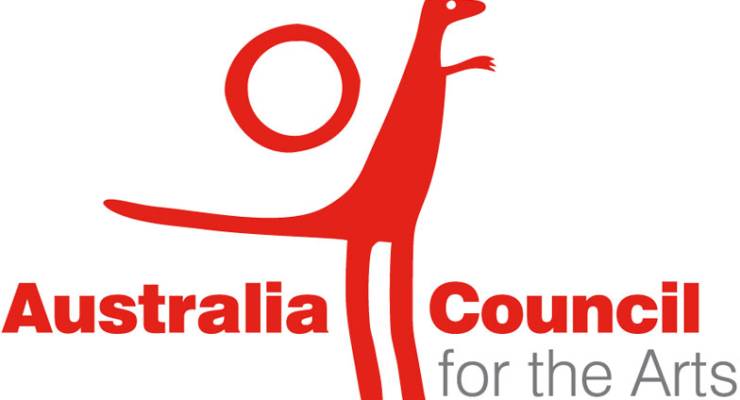
A year after the Australia Council culled four-year funding to more than 50 organisations, arts organisations are still reeling from the impact.
In 2015, former federal arts minister George Brandis announced the Coalition was hacking $104.8 million off OzCo over the next four years. Some of the money was restored by Arts Minister Mitch Fifield and some more of it was returned in this week’s budget, but OzCo still took a big hit.
Working from a shrunken budget, the Australia Council had to reject 138 of the 262 applications it received for its May 2016 round of four-year operational funding grants. At least 50 of the those that lost out had relied on OzCo to help out with rent, salaries and other operational costs, some for more than a decade.
Crikey checked in with eight such organisations to see how they were doing a year after they missed out on funding. Most said they have cut jobs, moved to smaller offices, or are producing less work than before while they try to find solutions.
Aftermath of the OzCo bloodbath: the numbers
Two of the organisations said they had to lay off employees following the OzCo funding cuts, while one conceded it had “restructured staff” but wouldn’t comment any further.
Sydney-based dance ensemble Taikoz received operational money from the Australia Council for more than a decade. Its grant had grown over the years and stood at $253,000, accounting for 20% of the organisation’s income, when it was axed last year. Taikoz general manager Lee McIver says the group has gone from employing 11 staff members last year to the equivalent of just 1.7 employees, none working full time.
While the administrative staff is the first to go in layoffs, smaller organisations struggle to retain even essential creative roles. Melbourne-based Aboriginal & Torres Strait Islander performance company Black Arm Band received $76,000 a year from the Australia Council. The funding made up nearly 30% of Black Arm Band’s income. The company’s executive producer Sarah Greentree said: “We no longer have money to have an artistic director. We employ them on a project-basis now. Not having someone in the office to go means you can’t have that sort of continuity in the projects.” Greentree also says the organisation can no longer offer perks like staff travel or professional development.
The staff who remain are having to make do with shrinking resources. Sydney’s Taikoz is operating without what is perhaps the most basic requirement of a dance company — a rehearsal space. The lease on its old venue ended in 2015 and soon after, the building was sold to a property developer to make way for apartment blocks. Taikoz general manager Lee McIver said: “We can’t afford to take out a lease on commercial rates.”
Staff cuts and shrinking resources have meant the organisations’ output has suffered. Taikoz had a full season last year with 29 main-stage performances (concert and theatre), but this year, it plans on just five. The Canberra Contemporary Art Space has had to pull the plug on many of its projects, including its international residency exchange and collaborations with artists from the country. In Melbourne, the 78-year-old literary magazine Meanjin has cut its unit price by 50% and its recent issues are printed entirely in black and white.
The creative process
With no OzCo safety net to fall back on, companies run the risk of churning out run-of-the-mill art. Smaller art organisations especially could be forced to put commercial viability before creative expression.
Black Arm Band’s Sarah Greentree said: “We can’t take any risks. We have to be conservative with the work we produce.”
The sentiment is echoed by Sydney-based PACT Theatre’s creative director and CEO Katrina Douglas. She says the funding cuts mean the group has to refine its program to concentrate on core projects.
“We can’t really take up anything that’s not funded,” Douglas said.
But National Association of Visual Arts, 30% of whose income came from OzCo, offers a different view. A NAVA spokesperson said: “We are truly independent now.”
Looking for solutions
With less money coming in, will artists or the public make up the shortfall?
Industry players are determined it be neither. McIver says raising ticket prices for the consumers is not an option because they still have to be “reasonable within the marketplace”. Meanwhile Broker says: “We don’t wanna be in a position where we exploit people, asking them to donate their paintings for free.”
As such, the survivors face a difficult challenge: how to grow their revenue without “compromising on artistic integrity” as CCAS director David Broker puts it.
The first obvious solution is to ask state governments to pick up some of the slack. All the organisations we spoke to said they were actively seeking out government funding, both project-based and operational. In many cases, state and local governments have continued or initiated support to the abandoned organisations.
PACT Theatre was able to lease office space in Sydney for five years through the local government. Then this year, Adelaide based multi-disciplinary arts organisation Vitalstatistix secured funding from Arts South Australia. Taikoz was unsuccessful in its project-based grant application to the Australia Council but has $130,000 a year grant from Arts NSW, which also provides operational funding to NAVA.
Applying for grants places extra pressure on the already strained resources of these organisations. Greentree points out “applying for grants is a full-time position in itself”.
Sponsors, subscribers, and universities
Looking beyond grants, the survivors have turned to creative ways to keep the show going. Taikoz has been able to bring on board a sponsor who will add $50,000 to their income for the year. CCAS and Meanjin both said they were open to looking into sponsorship.
They have also benefited from subscription drives. NAVA reports its post-OzCo-cuts campaign yielded a 22% increase in its membership subscriptions. A day after losing its funding, Meanjin put up an appeal with a picture of a tattered child looking up at the viewer, a bowl in hands, asking them to subscribe to the magazine. Meanjin editor Jonathan Green says subscriptions doubled last year.
Meanjin’s 78th year wasn’t its last, as Green speculated might be the case in an editorial in May last year. In a move that editor Green says brings the literary stalwart “closer to the university” Meanjin was able to tap further in to its existing support from =Melbourne University. The university has signed Green on as an enterprise fellow for a duration of three years. This removes Green’s salary from Meanjin’s books, making up for some of the $60,000 the magazine lost from OzCo, he explained.
So far, the OzCo cuts have resulted in two fatalities. Found in 1974, the Australian Experimental Arts Foundation (AEFA) had to shut down after its funding vanished. The Contemporary Arts Centre of Australia (CASCA) suffered a similar fate. Together, they lost more than $150,000. Neither could continue functioning on its own. However, the two organisations decided to come together and with a $400,000 injection of capital from Arts SA formed a new organisation, the ACE OPEN, which operates out of AEFA’s home turf but with a completely new staff.
The last one year has been tumultuous for the arts sector. Many smaller companies are still trying to find their footing while the bigger ones soldier on, bolstered by state government support. How long they can keep it up remains to be seen.








Crikey is committed to hosting lively discussions. Help us keep the conversation useful, interesting and welcoming. We aim to publish comments quickly in the interest of promoting robust conversation, but we’re a small team and we deploy filters to protect against legal risk. Occasionally your comment may be held up while we review, but we’re working as fast as we can to keep the conversation rolling.
The Crikey comment section is members-only content. Please subscribe to leave a comment.
The Crikey comment section is members-only content. Please login to leave a comment.